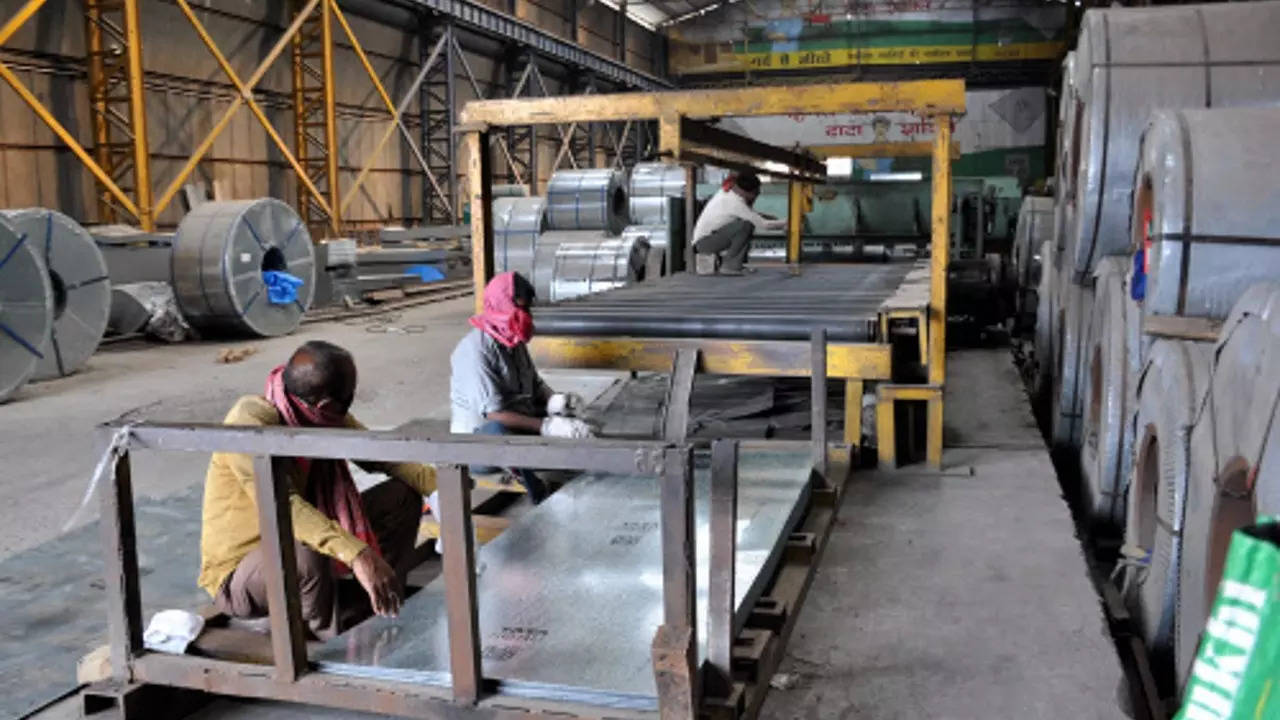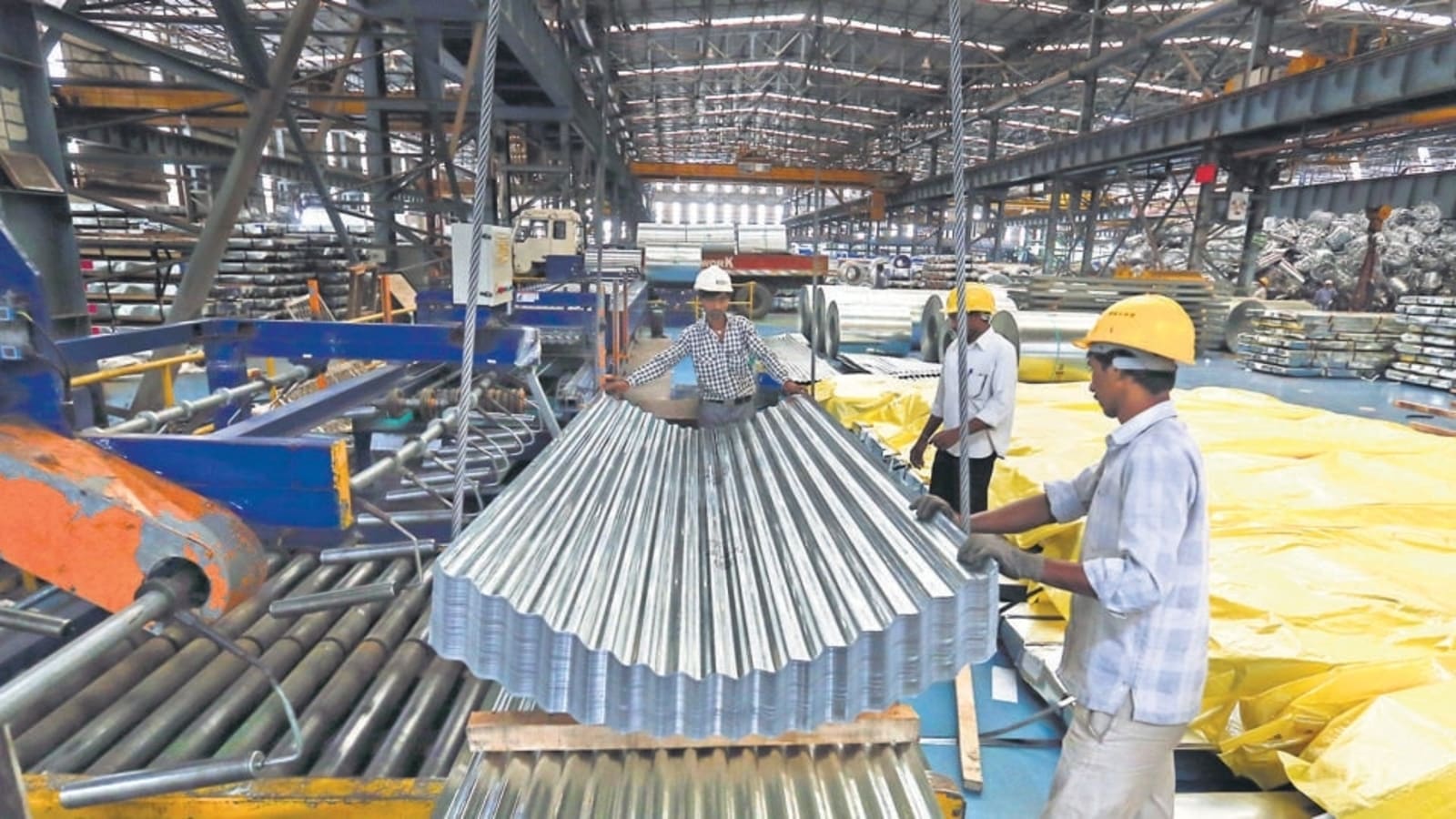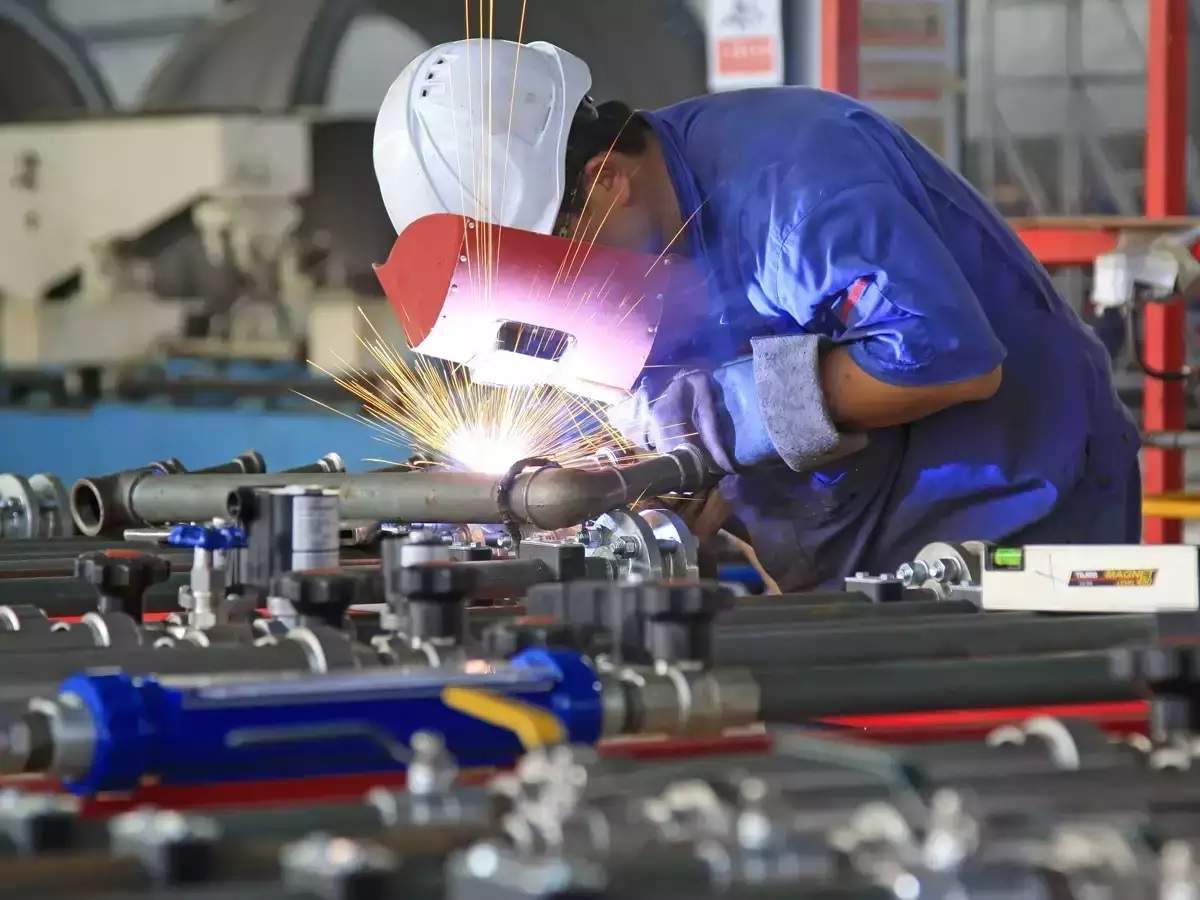Industrial Production Surges 5.2 Percent in May

Industrial Production Surges 5.2 Percent in May
In May 2022, the Index of Industrial Production (IIP) showed a 19.7% increase in factory production.
According to the official figures on Wednesday, the manufacturing and mining sectors performed well, helping India’s industrial production increase to 5.2% in May from 4.5% in April 2023.
The Index of Industrial Production (IIP) indicated a significant increase in industrial production in May 2022, with a growth rate of 19.7%. This growth is mainly attributed to the reduced base effect.

As per an official statement, it’s essential to consider the exceptional circumstances caused by the COVID-19 pandemic since March 2020 when interpreting the growth rates compared to the same period in the previous year.
According to IIP statistics issued by the National Statistical Office (NSO), manufacturing sector production increased by 5.7% in May 2023 compared to a growth of 20.7% a year earlier.
In May 2023, power generation increased by 0.9% compared to a gain of 23.5% a year earlier.
Compared to an 11.2 per cent growth in the same month last year, mining output increased by 6.4% during the reviewed month.
According to use-based categorization, the capital goods category increased by 8.2% in May this year as opposed to 53.3% last year. The output of consumer durables increased by 1.1% during the month compared to a growth of 59.1% during the same time the previous year.
Production of consumer non-durable items climbed by 7.6% compared to a gain of 1.4% a year earlier. Infrastructure and construction products increased 14% compared to 18.4% in the same period last year.
The report also revealed that compared to the same month last year, the output of primary products increased by 3.5%.
In May, the output of intermediate products increased by 1.6% as opposed to a 17.5% rise in the same month the previous year.
The growth in IIP is 4.8% in April–May of fiscal 2023–24, which is a decrease from 12.9% the same time a year before.
Industrial production in May 2023 has made a significant leap, registering an impressive growth of 5.2 per cent. As per data from the Central Statistics Office, this uptick reflects a recovering and robust industrial sector, demonstrating the economy’s resilience amid changing global circumstances. This detailed article will delve into the data, key factors driving this growth, the impact on various sectors, and its potential implications for the broader economy.

Industrial production, which constitutes mining, manufacturing, and electricity sectors, saw a substantial rise from the previous year, particularly noteworthy given the tumultuous global economic conditions. The manufacturing sector experienced a considerable upturn, registering a growth of 5.8 per cent, contributing significantly to the overall rise in industrial production. Meanwhile, the mining sector experienced a 4.5 per cent surge, and the electricity sector saw an increase of 6.1 per cent.
Furthermore, capital goods, a key indicator of investment, exhibited an impressive 7.5 per cent growth, while consumer durables, indicative of consumer sentiment, increased by 5.3 per cent. These substantial numbers are a testament to the vibrant industrial activity nationwide.
There are several drivers behind this robust growth. Firstly, the rebound can be attributed to easing restrictions and the gradual reopening of economies worldwide. This has led to a resurgence in demand, particularly in sectors walloped by the pandemic, such as automobiles and consumer durables.

Secondly, government stimulus packages and supportive policies have provided a vital lifeline to industries, enabling them to regain momentum. The government’s proactive measures, such as tax incentives and subsidies for manufacturers, have fostered an environment conducive to growth and innovation.
Lastly, the advent of technology and digital transformation has revolutionized industrial production. With an accelerated shift towards automation, industries have adapted to new norms, becoming more resilient and capable of handling disruptions more efficiently.
The 5.2 per cent growth in industrial production has varying impacts across different sectors. Sectors like automobiles, electronics, and machinery, which saw increased demand, will likely benefit from this growth, leading to job creation and increased investment. However, sectors still struggling to recover, like tourism and hospitality, may see a slower pace of recovery.

The surge in industrial production is a positive sign for the broader economy. It signifies a rebound in economic activity, indicative of potential GDP growth in the coming quarters. A rising industrial sector could also increase employment opportunities, boosting consumer confidence and spending. However, it’s important to note that continued growth would depend on sustained demand and the effectiveness of the government’s policy interventions.
The 5.2 per cent rise in industrial production in May 2023 signals a promising recovery trajectory for the industrial sector. However, this growth should be nurtured through continuous policy support, investment in technology, and market reforms. While the rebound is worth celebrating, it’s equally important to ensure that it is sustainable and inclusive for all sectors of the economy. The journey ahead may still have its challenges, but the resilience shown by the industrial sector offers a beacon of optimism for the economic landscape of the future.





